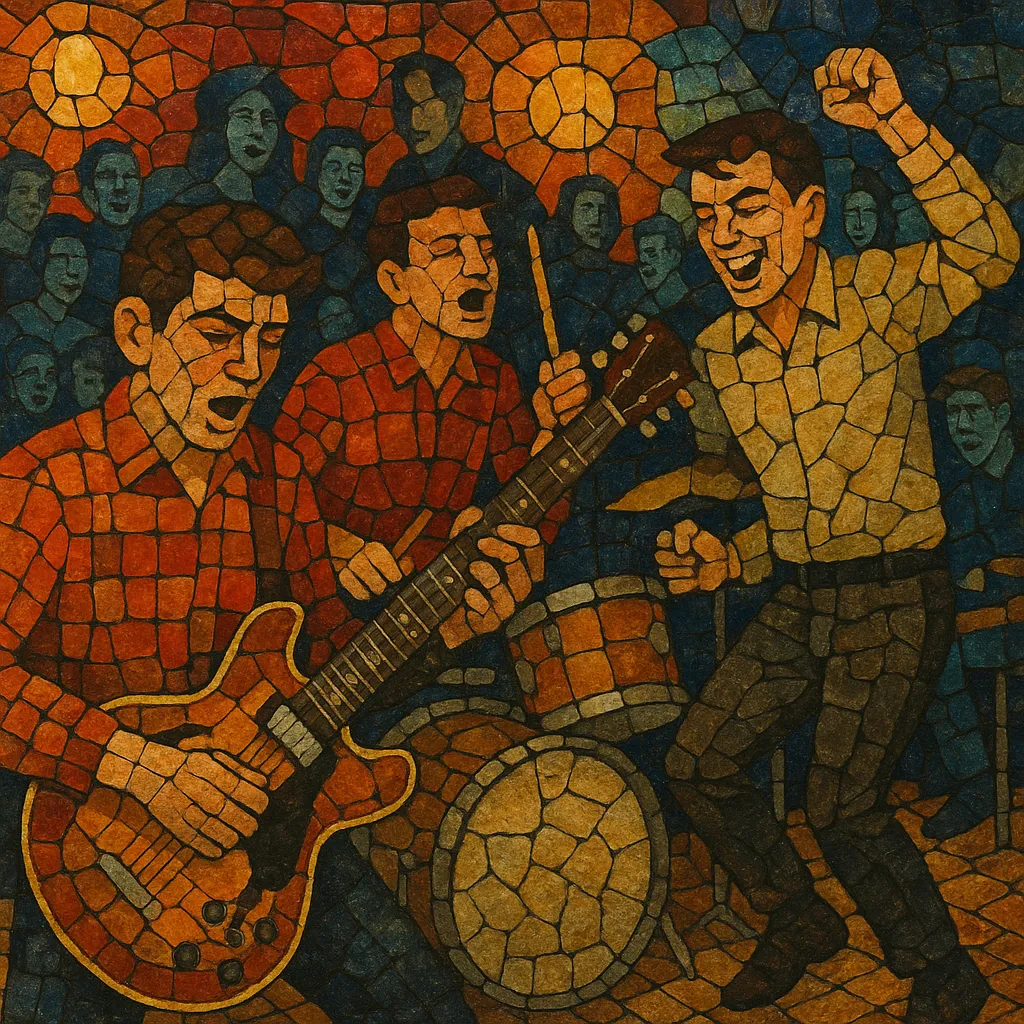
Frat rock is a raucous, party-oriented strain of early-to-mid 1960s American rock built for college dances, teen hops, and bars. It favors loud guitars, pounding drums, crude combo-organ riffs, and shouted, call‑and‑response vocals over sophistication or studio polish.
Songs typically revolve around a few chords (often I‑IV‑V or 12‑bar blues), brisk tempos, and chantable hooks about partying, dancing, cars, and weekend rebellion. The overall feel is raw, sweaty, and communal—designed to get a room moving rather than to impress audiophiles.
Anchored in the Pacific Northwest and other regional scenes, frat rock overlaps with early garage rock and surf, and it produced definitive anthems like The Kingsmen’s "Louie Louie" that became the template for countless bar bands and proto‑punk acts.
Frat rock grew out of late 1950s rock and roll and rhythm & blues bar-band culture in the United States, especially in regional circuits where bands played school dances, fraternity parties, armories, and VFW halls. Early surf instrumentals, rockabilly drive, and doo‑wop shout‑along energy fed into a louder, cruder approach aimed at getting crowds to dance and sing.
The style coalesced in the early 1960s with rough, mid‑tempo stompers built on I‑IV‑V progressions and raucous vocals. The Kingsmen’s "Louie Louie" (1963) became the ur‑text, while regional acts like The Wailers and Paul Revere & the Raiders set the Pacific Northwest blueprint. One‑hit classics by The Rivieras ("California Sun"), The Premiers ("Farmer John"), The Swingin’ Medallions ("Double Shot (Of My Baby’s Love)"), and The Trashmen ("Surfin’ Bird") cemented the party-first aesthetic.
As the British Invasion raised musical expectations, many frat rock bands shaded into the burgeoning garage rock movement—still raw and amateurish but increasingly original in songwriting. The same looseness, volume, and attitude helped seed proto‑punk and, later, punk rock. Decades on, frat rock’s spirit persists in bar‑band traditions and punk’s love of noisy, communal sing‑alongs.
Frat rock’s legacy is less about virtuosity than feel: crowd‑unifying chants, distorted combo‑organ and guitar riffs, and sweaty live energy. It remains a touchstone for musicians seeking unpretentious, high‑impact party music and a direct line from early rock & roll to garage and punk.

